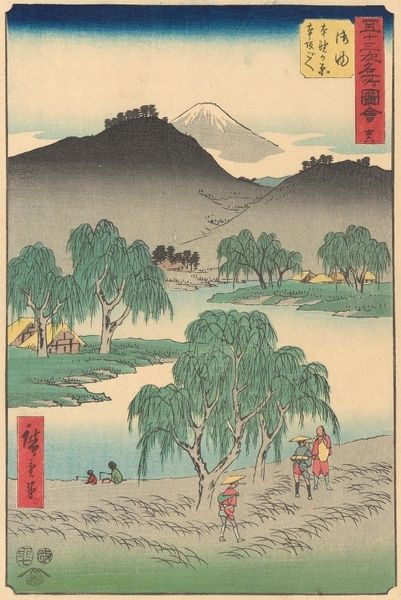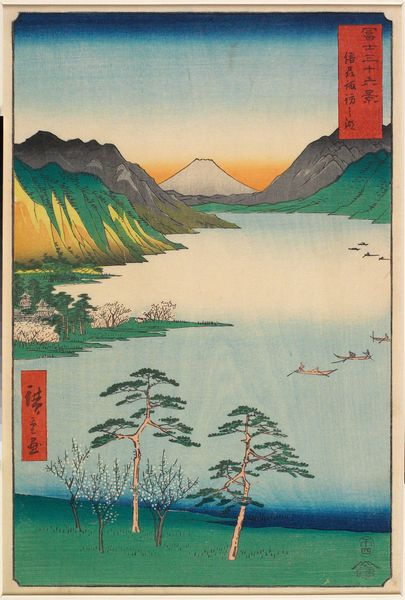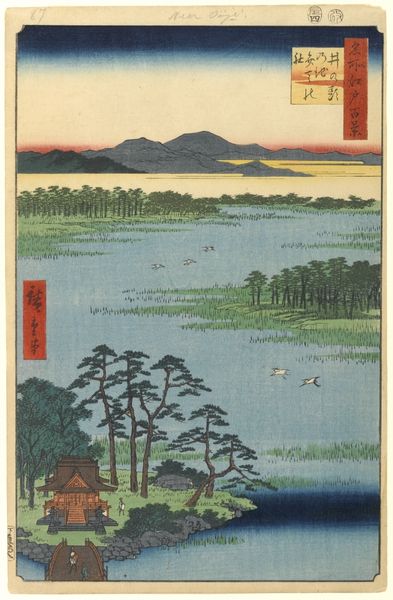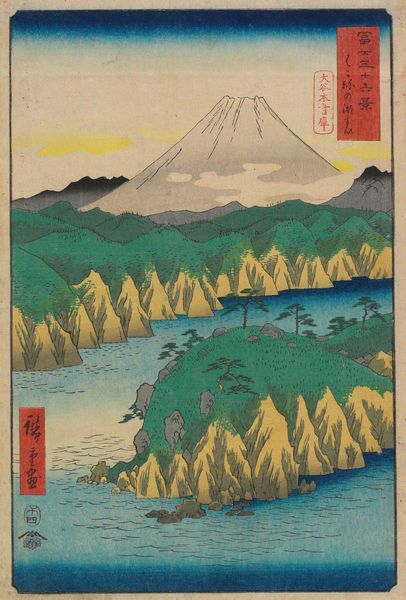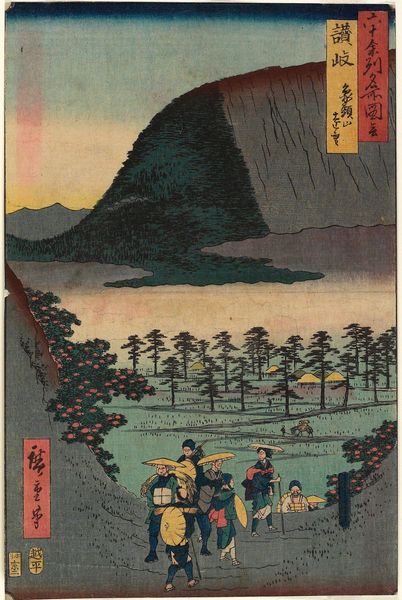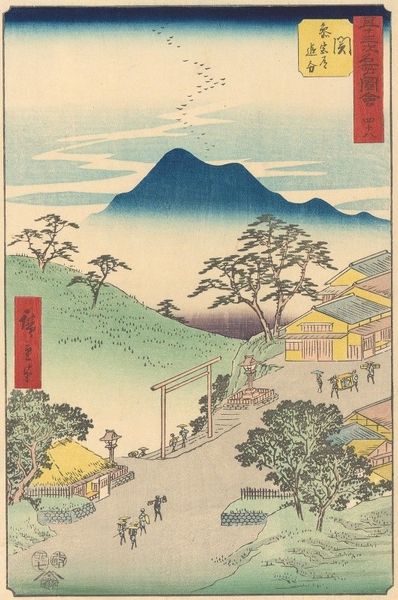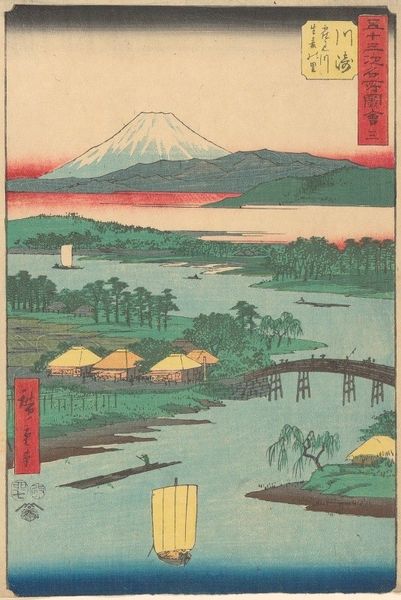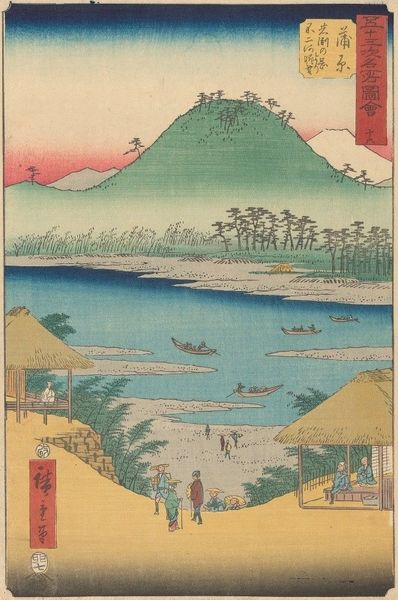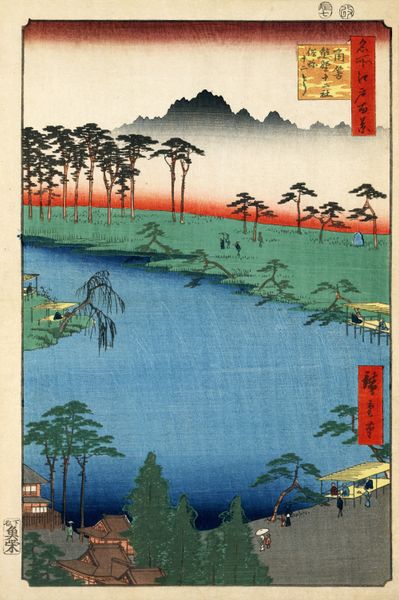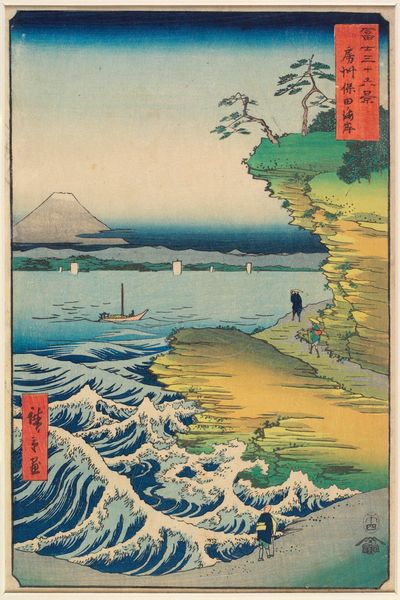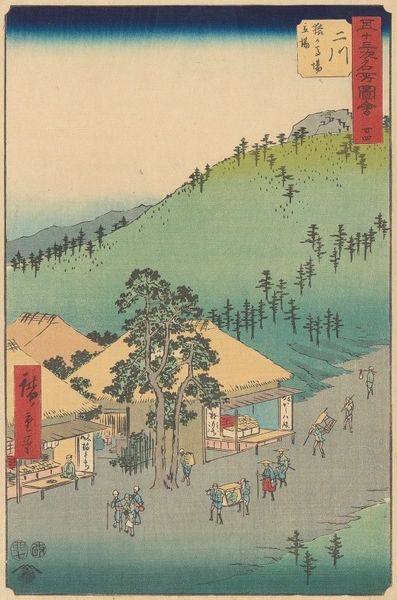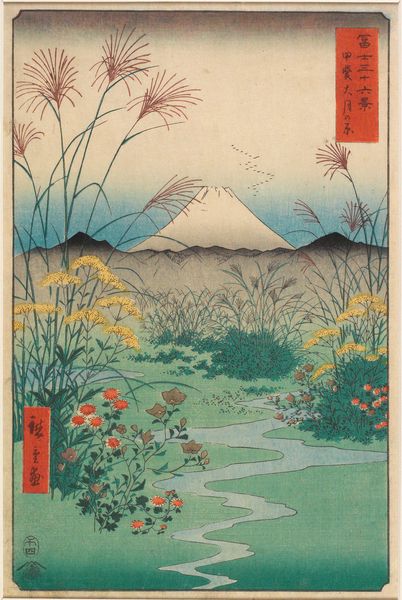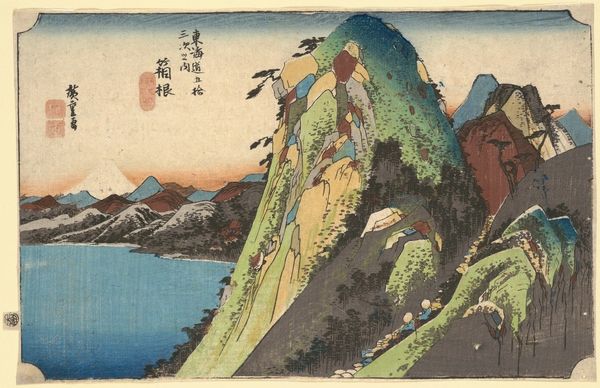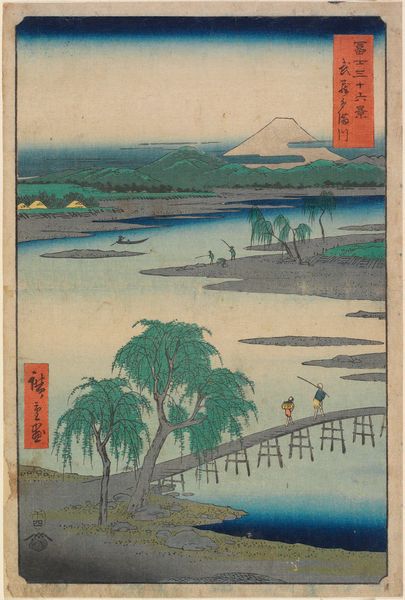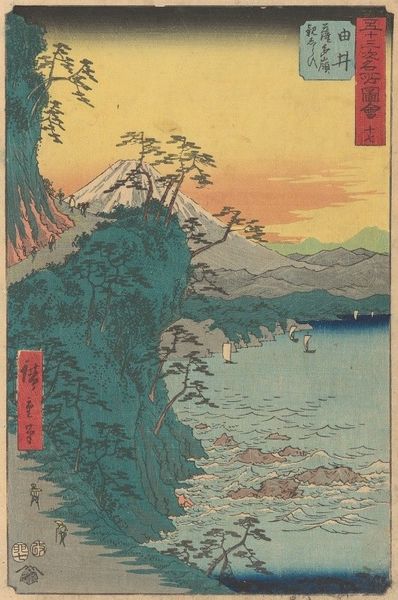
Dimensions: height 338 mm, width 111 mm
Copyright: Rijks Museum: Open Domain
Curator: Before us is Utagawa Hiroshige's woodblock print, "Tonosawa in Hakone," created in 1854. This piece captures a specific location along the Tokaido road, one of the most important routes in Edo-period Japan. Editor: The scene certainly evokes a sense of serene contemplation, doesn’t it? The vertical composition really draws the eye upward, from the earthly tones of the riverbank to that misty, dreamy sky. Curator: The landscape is, indeed, a key element. Hakone was a challenging section of the Tokaido, known for its steep mountains and difficult terrain. Hiroshige, however, often romanticized these locations, shaping public perceptions through his prints. This image was meant to be widely circulated, informing an entire segment of the population about this specific region of their world. Editor: Right. And the flattening of perspective here, typical of Ukiyo-e, forces us to consider the spatial relationships quite deliberately. The way the bridge slices across the rushing water creates a compelling division of space. I notice a visual connection, too, between the river and the bands of cloud above the mountain. Curator: These prints served not only as depictions but also as souvenirs for travelers. Mass production allowed access to artistic landscapes even for commoners. The details, such as the figures crossing the bridge or resting in the tea house, illustrate the daily lives of the people traveling the road, too, not just a pure, isolated wilderness. Editor: Interesting. This tension between everyday life and landscape representation brings up something about our modern perception as well. What does this stylization mean in the current era when viewers engage with its presentation of traditional culture through modern experience? It appears very contemporary. Curator: That is a question, indeed. Now, what does that leave us with as we conclude this analysis? Editor: Ultimately, perhaps the power of "Tonosawa in Hakone" lies in its blend of visual poetry and social commentary, reminding us of the powerful intersection between art and history. Curator: Very true. These scenes served as windows into a specific moment in time, mediating people's perception and awareness of landscape, society and culture through visual narratives that are still worth appreciating to this day.
Comments
No comments
Be the first to comment and join the conversation on the ultimate creative platform.
